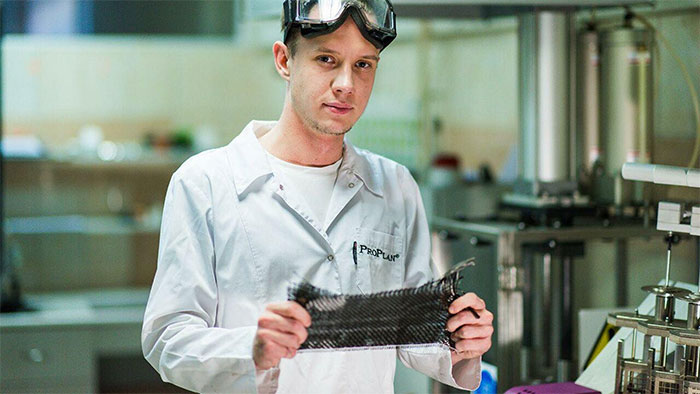A research team at the National University of Science and Technology (NUST MISiS) has developed a new technology to impart antibacterial properties to non-woven fabrics.
According to Sputnik, this technology utilizes low-pressure radio frequency plasma to modify materials. The authors believe that this new method will find widespread applications in medicine. The results of this research were recently published in the journal Materials Letters.

Antibacterial fabric developed by Russian scientists. (Photo: NUST MISiS).
The research aimed to impart antibacterial properties to non-woven fabrics began shortly after the outbreak of the COVID-19 pandemic.
Severe COVID-19 patients often experience immune system disorders, making them susceptible to secondary infections. Therefore, the Russian scientists aimed to create an antibacterial material for producing disposable protective clothing, bed linens, diapers, and other products. These items will help prevent the spread of pathogenic bacteria in hospital environments.
Mr. Ilya Larin, one of the authors of the study, explained to RIA Novosti: “To impart antibacterial properties to non-woven fabrics, the material must be placed between two electrodes in a sealed chamber. We evacuate the air to create a vacuum or near-vacuum environment while introducing argon into the system. To generate an electromagnetic field, argon is accelerated from the negative electrode to the positive electrode and ‘bombards’ the fabric to break molecular bonds of the polymer component.”
Subsequently, the material with antibacterial properties is treated with a methane-argon mixture. Methane participates in the process of multiple small molecules (monomers) in various polymers and is used to build blocks on the surface of the non-woven fabric, linking antibacterial agents to the surface. The products are then sterilized in an autoclave.
The scientists plan to use radio frequency discharge plasma to produce composite materials, improving their physical, mechanical, and operational properties.
This project also involves scientists from Kazan National Research Technological University, the Skolkovo Institute of Science and Technology, and the Blokhin Cancer Research Center. The research is conducted under the federal program “Priority 2030”.


















































